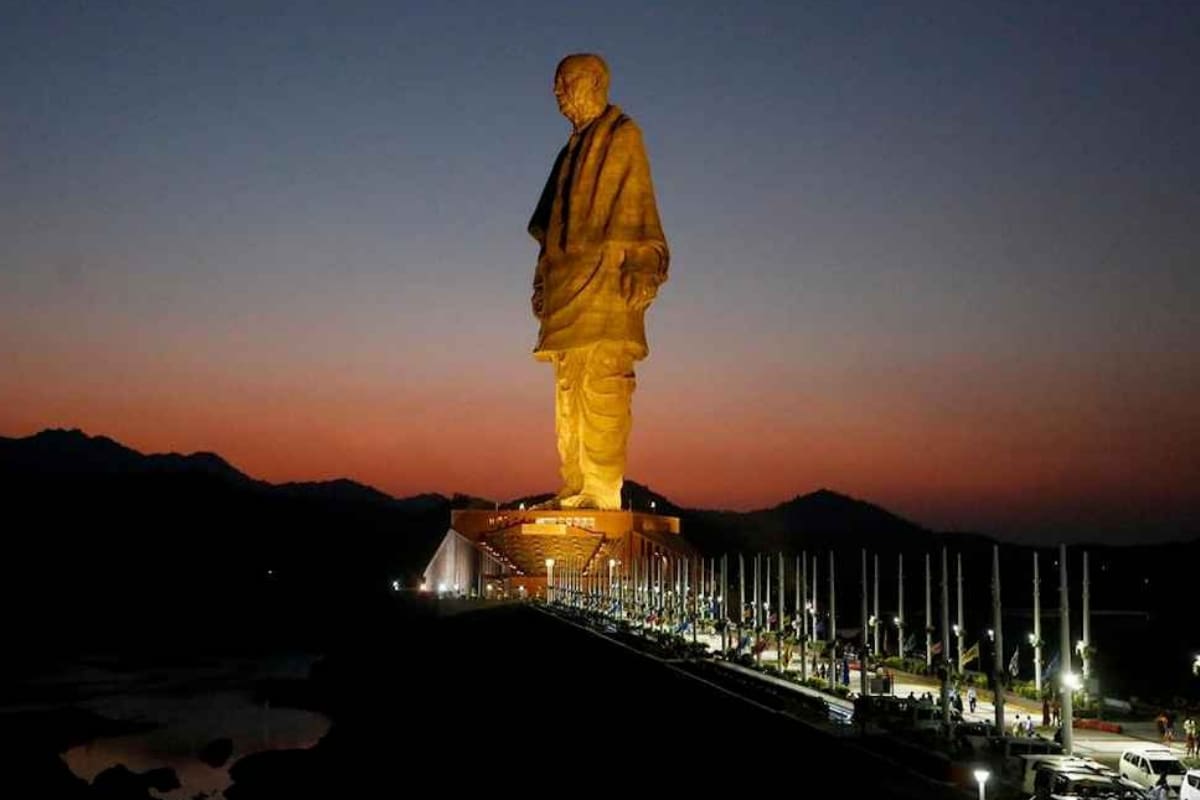Introduction
The Statue of Unity Height is a colossal statue located near the town of Kevadia in the state of Gujarat, India. It was inaugurated on October 31, 2018, by Prime Minister Narendra Modi, coinciding with the 143rd birth anniversary of Sardar Vallabhbhai Patel, to whom the statue is dedicated. Here’s everything you need to know about the Statue of Unity.
1. Height and Significance
The Statue of Unity is the tallest statue in the world, standing at 182 meters (597 feet). This height was chosen to match the number of assembly constituencies in Gujarat. It surpasses the height of famous statues like the Statue of Liberty (93 meters) and the Spring Temple Buddha in China (153 meters). The statue honors Sardar Vallabhbhai Patel, India’s first Deputy Prime Minister and Minister of Home Affairs. Patel played a crucial role in the unification of India by integrating over 500 princely states into the Indian Union after independence in 1947. The statue symbolizes his role in building a unified India.
2. Design and Construction
The statue was designed by Indian sculptor Ram V. Sutar and took around five years to complete. It was constructed using approximately 70,000 tons of cement, 18,500 tons of reinforced steel, and 6,000 tons of structural steel. The outer façade is made up of 1,700 tons of bronze cladding, giving it a striking appearance.
The statue’s base, which is 58 meters high, houses a museum and an exhibition hall that covers Patel’s life and his contributions to India. Visitors can take elevators to a viewing gallery at 153 meters, offering panoramic views of the Narmada River and the surrounding area.
3. Location and Accessibility
The Statue of Unity is located on Sadhu Bet, a river island near the Sardar Sarovar Dam on the Narmada River. The nearest city is Vadodara, approximately 90 kilometers away. The site is accessible by road, rail, and air, with nearby airports in Vadodara, Surat, and Ahmedabad.
The statue is part of the larger Sardar Vallabhbhai Patel Rashtriya Ekta Trust (SVPRET) project, which includes the development of infrastructure around the statue, including a Tent City, Valley of Flowers, and various parks and recreational areas.


4. Tourism and Impact
Since its inauguration, the Statue of Unity has become a major tourist attraction, drawing visitors from all over the world. The site includes several amenities, such as a sound and light show, a laser show on Patel’s life, and a research center dedicated to the study of national unity.
The statue has significantly boosted tourism in the region, contributing to the local economy. The project also created thousands of jobs during its construction and continues to employ locals in various capacities.
5. Cultural and Environmental Aspects
The Statue of Unity has been designed to withstand wind speeds of up to 180 km/h and earthquakes measuring up to 6.5 on the Richter scale. The structure is also eco-friendly, with efforts made to minimize environmental impact during construction.
Culturally, the statue has sparked discussions about the role of historical figures in contemporary India and the importance of unity in a diverse nation. It serves as a reminder of Patel’s contributions and the values he stood for.
6. Controversies and Criticisms
The construction of the Statue of Unity has not been without controversy. Some critics have questioned the cost of the project, which was around ₹2,989 crore (about $430 million), arguing that the funds could have been used for more pressing needs such as education, health, or rural development.
There were also concerns from local tribal communities who were displaced or affected by the construction. Despite these issues, the statue stands as a symbol of national pride for many Indians.
One Must Travel to Learn – Mark Twain
Conclusion
The Statue of Unity stands as a powerful symbol of India’s unity and strength, honoring Sardar Vallabhbhai Patel’s legacy while serving as a monumental reminder of the nation’s commitment to unity, progress, and national pride.
